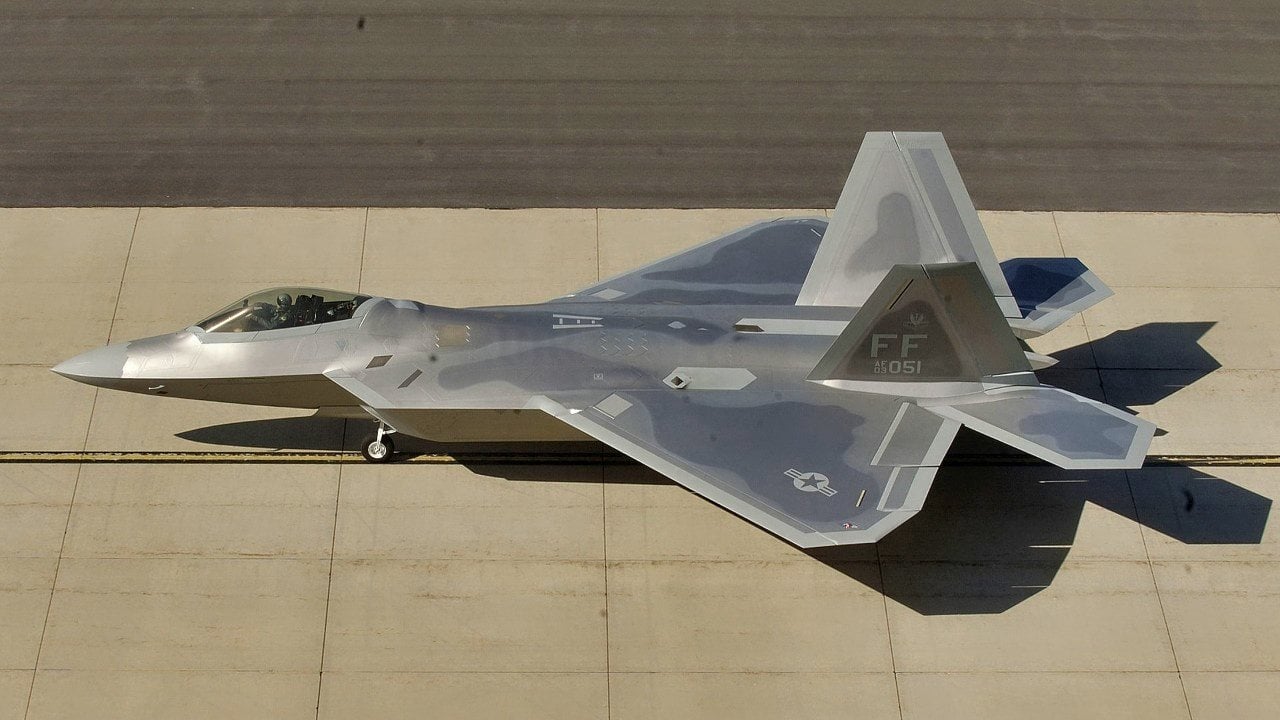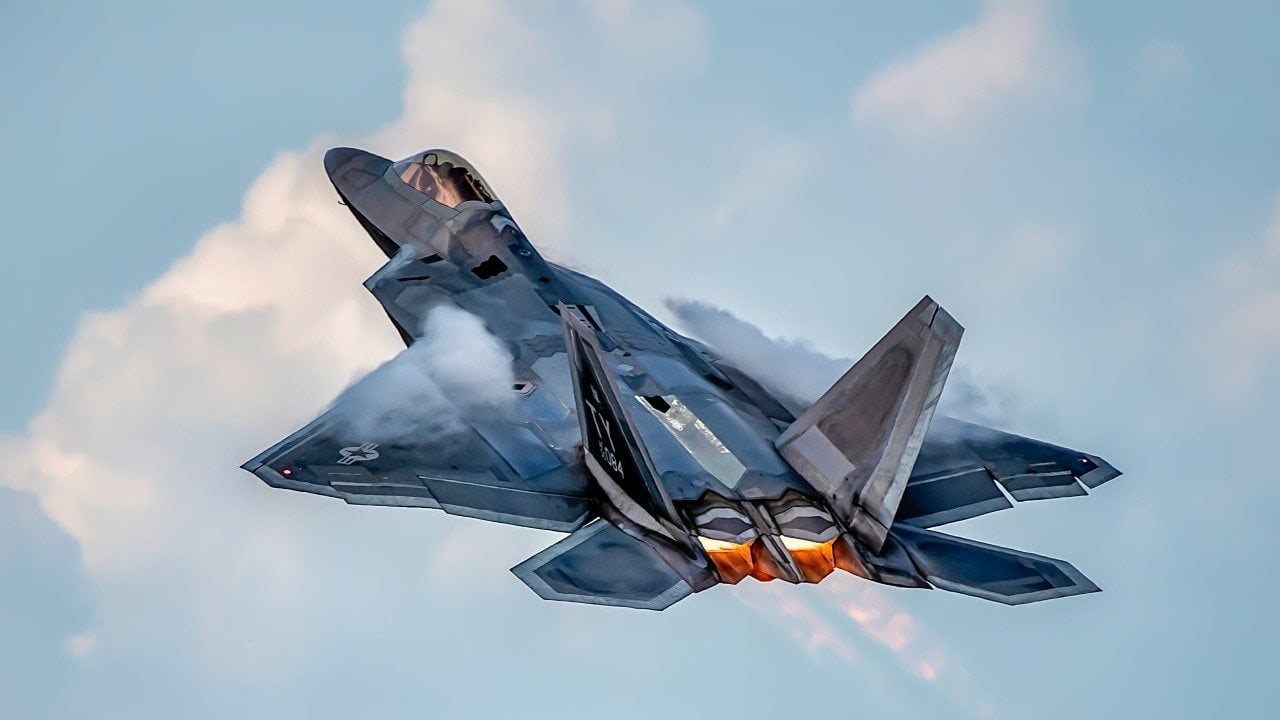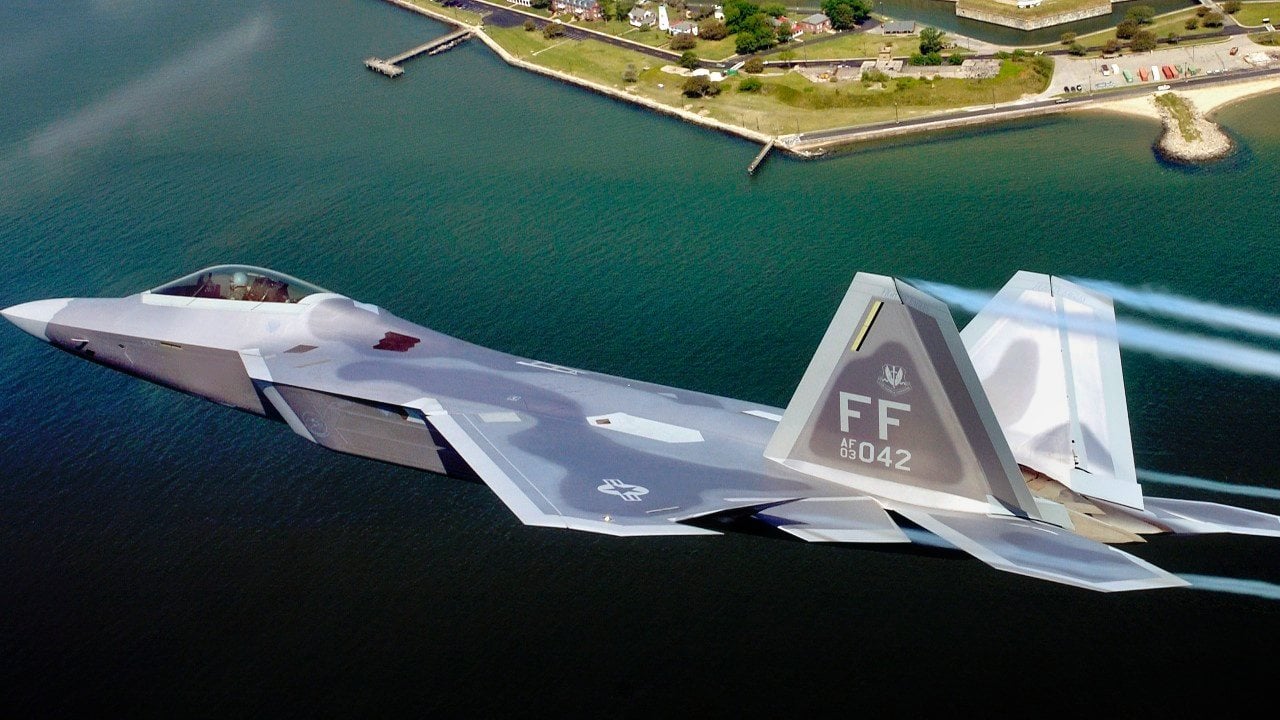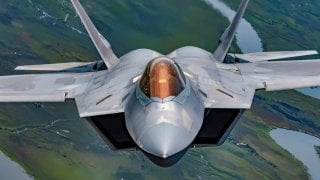Houthis Claim to Have Shot Down an F-22 Raptor Stealth Fighter
In nearly two decades in service, not a single U.S. Air Force F-22 Raptor stealth fighter has been shot down – even if the Houthis claim otherwise.
Houthi Rebels Claim to Have Shot Down an F-22 Raptor – Dream On: Hours after the United States Navy warships launched Tomahawk missiles at half a dozen Houthi rebel positions in Yemen, the Iranian-back militants have claimed on social media to have downed a U.S. Air Force Lockheed Martin F-22 Raptor air superiority fighter.
Reports on X, the social media platform formerly known as Twitter, allege the F-22 was "shot down over Sanaa," which was one of the six sites targeted by the United States on Thursday evening and early Friday local time. There has been no visual evidence of any downed U.S. aircraft.
Several rumors circulated online following the strikes.
"US defense official tells me no US F-22s have been shot down tonight, no US warships have been hit nor has the US embassy in #Baghdad been targeted Just thought I'd knock down all the rumors at once. #RedSea #Houthis," Carla Babb, Voice of America's Pentagon correspondent and news anchor, also said in a tweet on Thursday evening.
Dispelling the F-22 Raptor Rumors – Typhoons Not Raptors
The Pentagon has confirmed that the Tomahawk missiles were launched from U.S. Navy surface ships and the Ohio-class ballistic missile submarine USS Florida (SSGN-728).
However, the air operations were carried by the UK's Royal Air Force and involved four Eurofighter Typhoon FGR4s aircraft, supported by a Voyager air refueling tanker.
According to the MoD, the aircraft launched Paveway IV guided bombs to conduct precision strikes on two of the Houthi facilities.
The Iranian-backed militants had repeatedly used drones and missiles to target commercial ships in the Red Sea and the Gulf of Aden for weeks, supposedly in support of Hamas in its war with Israel.
Officially known as Ansar Allah but generally referred to by the name of their founder, Hussein al-Houthi, the Houthis are members of a minority Shiite sect in Northern Yemen. They have been engaged in a brutal civil war for more than a decade against Yemen's internationally recognized government and an international coalition led by Saudi Arabia. The Houthis, which had been designated as a terrorist group, have received substantial economic support and weaponry from Iran.

F-22 Raptors in the Middle East
In June, the United States Air Force deployed an undisclosed number of Lockheed Martin F-22 Raptors to the Middle East – the United States Central Command's (CENCOM's) area of responsibility – to address the increasingly unsafe and unprofessional behavior by Russian aircraft in the region.
The fifth-generation air superiority fighters are part of a multifaceted show of U.S. support and capability.
The F-22s, which have been deployed from Langley Air Force Base (AFB), Virginia's 94th Fighter Squadron, will demonstrate the U.S. Air Force's ability to re-posture forces and deliver overwhelming power at a moment's notice. While in the CENTCOM area, the 94th Fighter Squadron will integrate with coalition forces on the ground and in the air.
This rapid deployment and integration into coalition operations is a clear demonstration of the commitment shared by partners, allies, and the U.S. to long-term peace and stability in the region, CENTCOM stated.
The History of the F-22
Developed as air superiority fighter in the late 1980s as part of the United States Air Force's Advanced Tactical Fighter (ATF) program, the F-22 won out over a competing design from Northrop and McDonnell Douglas – the YF-23.

The single-seat, twin-engine, all-weather stealth tactical fighter took its first took flight 26 years ago on September 7, 1997, following six years of development. The Collier Award-winning aircraft was designed to combine stealth, supercruise, agility, and situational awareness, coupled with improved supportability.
While primarily an air superiority fighter, the Raptor could also serve as a ground-to-air attack aircraft.
It was even briefly designated the F/A-22, only to be officially redesignated the F-22 in December 2005, when the aircraft achieved its initial operational capability with the U.S. Air Force's 27th Fighter Squadron.
As the first "fifth-generation" aircraft, the Lockheed Martin warbird was also developed with a "first look, first shot" advantage that included its AN/AGP-77 active electronically scanned array (AESA) radar that could track targets before going electronically silent. In addition, each F-22 pilot could receive information from other F-22s, allowing for a radar-silent attack.
In addition to ground attack, the multirole aircraft was designed to be capable of conducting electronic warfare and even signals intelligence capabilities.

It remains unclear if the U.S. Air Force's F-22s are still operating in the Middle East, but the aircraft likely wouldn't have been the first choice to carry out such a mission against the Houthis. While capable of ground attack missions, the F-22 is an air superiority fighter – and as noted it was deployed to the region to deter Russian fighters.
In nearly two decades in service, not a single F-22 Raptor stealth fighter has been shot down – even if the Houthis claim otherwise.
Author Experience and Expertise: Peter Suciu
Peter Suciu is a Michigan-based writer. He has contributed to more than four dozen magazines, newspapers, and websites with over 3,200 published pieces over a twenty-year career in journalism. He regularly writes about military hardware, firearms history, cybersecurity, politics, and international affairs. Peter is also a Contributing Writer for Forbes and Clearance Jobs. You can follow him on Twitter: @PeterSuciu. You can email the author: [email protected].


